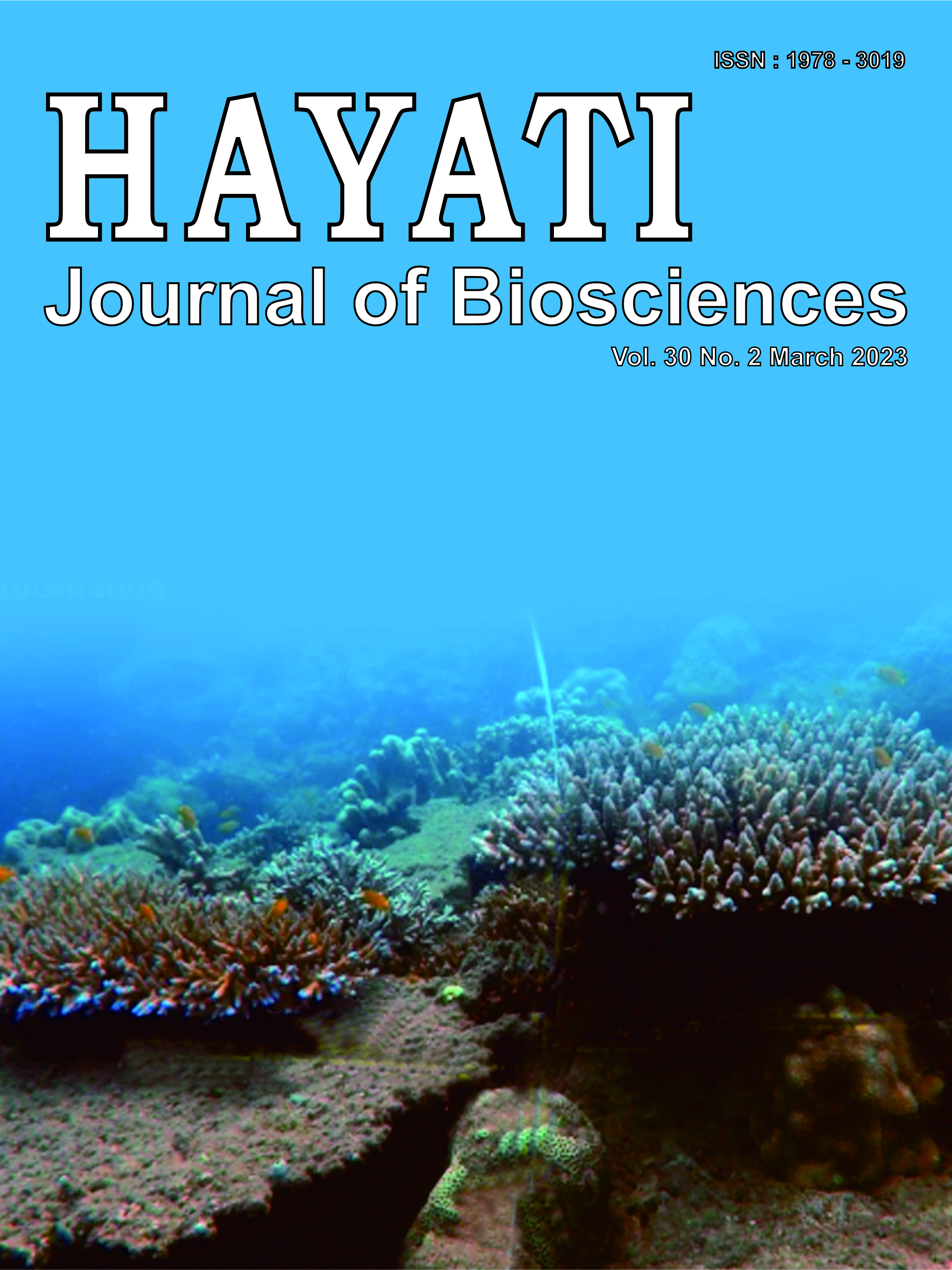Evaluation of Nutrient Content and Antioxidant Activity of Wood Ear Mushroom (Auricularia auricula-Judae) in the Addition of Reeds (Imperata cylindrica (L.) Beauv) as a Cultivation Medium
Abstract
The nutritional content of mushrooms depends on the type of substrate in the growing medium. Lignocellulose is one of the substrates used for fungal growth media. In this study, the effect of adding dried reeds (Imperata cylindrical (L.) Beauv) on Sengon (Paraserianthes falcataria (L.) Nielsen) sawdust-based media was investigated for wood ear mushroom (Auricularia auricula-Judae) fruiting body. Reeds have been added to Sengon sawdust as wood ear mushroom cultivated medium with variations of S0, S1, S2, S3, and S4 (0%, 25%, 50%, 75%, and 100% of reeds, respectively). S0 was designed as the negative control and S4 as the positive control. The evaluation was carried out against the C/N ratio, yield, biological efficiency (BE), nutritional content, and antioxidant activity of fruiting body mushrooms after 10, 20, and 30 days planted. The highest C/N ratio and BE were obtained from the S1 medium. The lowest moisture content was obtained from the S0 medium. The lowest fat content was obtained from the S4 medium. The best result of nutritional analysis includes the following; the highest total carbohydrate, ash, crude fiber, and crude protein content was obtained from S3, S4, S3, and S0. Furthermore, the best result of antioxidant activity against ABTS and DPPH was obtained at methanol extract of fruiting body mushrooms from S1 medium, compared with ascorbic acid as the positive control. This study has shown that adding reeds to the cultivated medium influences the growth, nutritional content, and antioxidant activity of wood ear mushrooms.
Downloads
Copyright (c) 2023 Sotya Rawiningtyas, Adi Setyo Purnomo, Sri Fatmawati

This work is licensed under a Creative Commons Attribution-NonCommercial 4.0 International License.
HAYATI J Biosci is an open access journal and the article's license is CC-BY-NC. This license lets others distribute, remix, tweak, and build upon author's work, as long as they credit the original creation. Authors retain copyright and grant the journal/publisher non exclusive publishing rights with the work simultaneously licensed under a https://creativecommons.org/

























.png) IPB University
IPB University Department of Biology
Department of Biology The Indonesian Biological Society
The Indonesian Biological Society 

